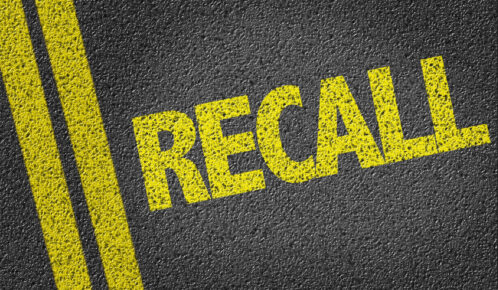Proving a defect in a product is essential for a successful product liability case. The burden of proof lies with you, the injured party, to demonstrate that a product defect caused your injury.
Table of Contents

Our product liability attorneys at Ankin Law can guide you through evidence collection, help you find qualified experts, and effectively present your case in court to maximize your chances of a successful outcome. Call our law firm today at 312-600-0000.
What Is a Product Defect?
A product defect refers to any flaw, imperfection, or deficiency in a product that renders it unreasonably dangerous to consumers or users. Product defects can lead to serious injuries or death to consumers. Identifying and addressing product defects is crucial for ensuring consumer safety and reducing the risk of liability for businesses involved in the production and distribution of goods.
How to Prove a Product Defect
To prove that a product caused your injury, you must gather evidence to support your claim:
- Purchase Receipt – A purchase receipt is necessary to establish that you purchased the product in question. The receipt should show the purchase date, the place of purchase, and the details of the purchase.
- Photos of the Defective Product – Visual evidence of the product and its defects is important. You should take photos or videos of abnormal wear and tear due to packaging, any product malfunctions, and any obvious dangers.
- Medical Records – If the defective product causes an injury, comprehensive medical records are used to highlight the extent and nature of the injury you sustained. Photos of physical injuries are also helpful supporting documents.
- Expert Testimony – In a court case, statements from product experts or professionals in a relevant field can strengthen your claim by explaining the product defect and the risk of dangers and injuries.
- Product Manuals or Warning Labels – When you purchase a product, it’s important to keep the instructions, which should include safety features and warnings of harm from misuse of the product. This can validate an injury claim.
Preserve the Product in Its Current State
If you suffer injuries due to a defective product, keep the product in its current state to validate your legal claim. Laws prohibiting abusive, deceptive, or unfair business practices protect consumers. Referred to as “UDAP statutes,” these laws generally allow a consumer who is harmed by a violation to sue for compensation and other forms of relief.
In Illinois, the Consumer Protection Law allows people who suffer damages due to a violation of this law to bring legal action through a product liability lawyer to recover economic or punitive damages. An Illinois court may also grant an injunction when appropriate and award reasonable attorney’s fees and costs.
The Importance of Medical Records and Expert Opinions
Defective products can result in physical harm or wrongful death for the person using the product. When legal action is taken by a victim, medical records serve as a bridge, linking the product’s defect to the injured person’s subsequent health issues. These records usually include a doctor’s notes, documented medical treatments, bills representing medical expenses, and a documented patient diagnosis and prognosis. Medical records give the court a detailed, chronological account of your health journey following the use of a product.
Expert opinions given by medical professionals or someone specializing in product design bring a layer of authoritative validation to your claim. Expert testimony can dissect complex topics, making them accessible to the court. When a professional testifies to the defective nature of a product or confirms a design flaw, it adds considerable weight to your case.
How to Establish the Product Defect Case Elements in Illinois
In 1972, Congress enacted the Consumer Product Safety Act (CPSA) to protect the public from harm. This act protects consumers by establishing consistent safety standards, promoting safety research standards, and enabling consumers to evaluate product safety and report concerns about unsafe products to the CPSA. The CPSA is an independent government agency with the authority to establish product safety standards, investigate dangerous products, order recalls of dangerous products, and ban products entirely from consumer use.
Common consumer complaints handled by the CPSA include cases involving different types of product liability claims, such as manufacturing errors, design flaws, failure to warn, inadequate directions for use, and misleading advertisements.
Companies that manufacture consumer products are required by the Consumer Product Safety Commission to test their products for risks. Any risks found must be listed on a warning label or in the instructions on how to use the product. Additionally, companies must warn consumers of the dangers of misusing a product.
There are two main ways to prove a product liability case: 1- the Consumer-Expectation Test and 2- the Risk Utility Test. Under both tests, the plaintiff has the burden to prove that the product that caused injury was defective and unreasonably dangerous.
1. Consumer-Expectation Test
Under the consumer-expectation test, the plaintiff must establish what an ordinary consumer who purchased the product would expect about the product and its safety. This standard applies the objective view of the normal, average expectations of a reasonable person, not the subjective expectations of the actual consumer who purchased the product.
2. Risk-Utility Test
Under the risk-utility test, the plaintiff must demonstrate that the magnitude of product danger outweighs the utility of the product as it is designed. The risk-utility test considers several important factors, including the foreseeable risks of harm, the instructions and warnings that accompany the product, and the nature and strength of consumer expectations regarding the product.
In Illinois, courts allow product liability lawyers to use either test. However, if there is risk-utility evidence, the court must give a risk-utility jury instruction, even if the plaintiff prefers to use the consumer-expectation test.
Other Elements in Proving a Product Defect for a Claim or Lawsuit
In addition to creating safe products through proper design and manufacturing, product manufacturers are responsible for warning consumers of any dangers associated with their products. Companies are required to test their products for safety and warn consumers of potential dangers. To prove this type of liability, consumers must show three important factors related to product liability negligence:
Foreseeability of Risk
A risk of harm for a product can arise through its intended use or unintended use by the manufacturer. This is often seen in cases involving dangerous and defective children’s products like beds, clothing, and toys. However, the risk must be foreseeable to the manufacturer at the time the product is sold. If the plaintiff can’t establish that the product was being used as the manufacturer intended, or at least in a way that the manufacturer should have foreseen consumers might use it, the plaintiff may not be able to claim compensation for injuries.
Lack of Warning
Once the plaintiff establishes the product was being used as intended by the manufacturer, it must also be established that the product packaging contained no warnings about product dangers. The plaintiff must prove that the lack of warnings existed before the product left the manufacturer. If a consumer peels off a warning label, they can’t hold a manufacturer liable for subsequent injuries.
Link Between Injury and Lack of Warning
The plaintiff must show a link between their injuries and the lack of warning labels or information. There must be a lack of warning for some dangerous condition that ultimately caused the plaintiff’s injuries.
Review Product Documentation, Instructions, and Warnings
A marketing defect is a failure to warn consumers about a product’s potential dangers. Marketing defects happen when a company begins promoting a product but fails to provide consumers with accurate warnings regarding potential harm.
For example, a company may market a new drug or household product but fail to warn consumers about potential drug side effects or dangerous chemicals contained in household products. In marketing defect lawsuits, the manufacturer or the seller of a product may be held liable for warning labels that are hidden or poorly placed, difficult to read, or difficult to understand (not in layman’s terms).
Analyze the Manufacturing or Design Process
A manufacturing defect is a mistake made during the manufacturing process, while a design defect is a flaw in the product’s design. Both can make a product dangerous to consumers. Manufacturing defects happen during the construction phase of product creation. Design defects happen when there is a fundamental flaw in how a product was created. In both cases, if a company that sells toys manufactures or designs a product with a sharp edge that can cut a child, but the problem is not caught or corrected, and a child suffers injuries, the company may be held liable for the child’s damages.
For help proving a product defect caused your injuries, call Ankin Law in Chicago at 312-600-0000. Our product liability attorneys take consumer injuries personally.



